Celebrity Life
Condo In Kuala Lumpur – Admire LUXXU’s New Project High In The Clouds
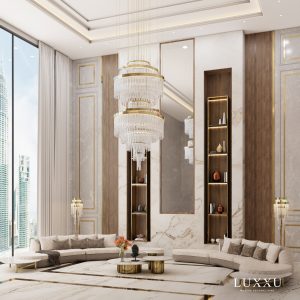
Condo In Kuala Lumpur – Admire LUXXU’s New Project High In The Clouds – Kuala Lumpur is a relatively young and modern city, mainly known for gleaming skyscrapers, like the Petronas twin towers, colonial architecture left by the British, hearty locals, and a plethora of natural attractions.
Considering all this, LUXXU found in Kuala Lumpur room to develop another opulent interior design project, always in harmony with the vibe and soul of the city.
House Tour: A courtyard tropical home with an inverted roof in Johor Bahru
This award-winning single-storey house in Johor Baru with multiple courtyards offers an unconventional way of living.
The post House Tour: A courtyard tropical home with an inverted roof in Johor Bahru appeared first on The Peak Magazine.
Bryant Lu: Building the Future

What will our built environment look like, two or three generations from now? The architect and vice-chairman of Ronald Lu & Partners, the highly successful practice founded by his father, shares his thoughts and visions with Prestige.
If Bryant Lu wasn’t born to be an architect, then from the way he puts it, it’s hard to envisage him becoming anything else. “When I was three years old,” he says, “I remember my father [the architect Ronald Lu] would come home in the evening and draw. Naturally I was curious – what was he doing? And all the cool gadgets he was using – this was when architects worked without computers. So I became intrigued and I have memories of him sitting me on his lap and telling me, ‘This is a plan. This is a door, this is a window and this is how you draw them.’ I guess that’s how I was influenced by the profession.”
Lu also recalls an incident, shortly afterwards, when his kindergarten teacher had asked her pupils to draw a room and was flummoxed by the young Bryant’s effort. “Now most people would draw it as a three-dimensional space, but I took out a black crayon and started to draw lines. And the teacher thought I was nuts. So she called my mom and my mom showed up. The teacher said, “I asked him to draw a room and he gave us this. What the heck is he doing?’ My mom looked at it and cracked up laughing. She said, ‘This is a floor plan of his room. So when you asked him to draw a room he gave you a floor plan.’”

Although there was no great pressure from his father, whose practice was by that time winning major projects across Hong Kong, it was also no surprise that when the younger Lu finished high school in Sydney, Australia and got a place at Cornell in the US, he’d opted to study architecture and business. After graduating in 1997, he worked in New York for a couple of years before returning home, ready to begin the new millennium with a position at his father’s company.
I’m talking to him in the offices of Ronald Lu & Partners (RLP), where, for the past 22 years, he’s been instrumental in transforming business for the award-winning architectural practice by pushing for sustainable design, opening offices in key cities (especially in mainland China), and overseeing its corporate affairs. Now in his forties, tall, lean and looking a good deal younger than his age, he’s telling me about his passions for design (not just buildings, but equally their human and civic contexts), the environment and sustainability.
“I was always intrigued as to how buildings, spaces and cities worked together, and how you could create these environments,” Lu tells me. “I think ultimately it’s about how these spaces and places shape your life, and how architecture is just one of the ways to bring about a better life for people. Deep down, I’ve always wanted to make the world a better place, though it just happened that various factors pushed me down this path.”

Asked to cite influences – architects or buildings – that helped nudge him towards his vocation, he lists, among others, Michelangelo’s Piazza di Campidoglio in Rome, IM Pei’s Pyramid at the Louvre in Paris, and Frank Gehry’s Guggenheim Museum Bilbao. It’s clear he’s as impressed about the way in which each building or facade impacts and transforms its surroundings and the community around it as he is with the structures themselves.
“I mean, the Guggenheim in Bilbao is stunning,’ says Lu, “not just as a piece of architecture, but in the way that project changed Bilbao and northern Spain. So I guess I’m looking not just at the building and its beauty, but also its impact – its ability to engage the community and change the economy as well. Aside from its architectural approach, [Richard Rogers’ and Renzo Piano’s] Pompidou Centre also changed museum design and the district tremendously. And there’s Le Corbusier’s Villa Savoye – I still have the Lego model – which changed the narrative of a house …”
To my suggestion that the work of an architect has evolved from an emphasis on aesthetics to a broader consideration of a structure or a project’s impact, Lu says that for him, it’s the purpose of architecture that’s evolved. “Obviously, there are always the basic requirements of putting a roof over your head, and that the roof is safe. But I think that in the 1980s and ’90s, there was a period of very theoretical works that were trying to find an identity, and that approach never really appealed to me. For me, it’s ‘how can I make the world a better place?’ – so I’m constantly searching for the purpose, with architecture as a means of doing that.”

Implicit in this belief is the need for environmental sustainability, a requirement that struck Lu as long ago as his school days in Sydney. “When I was in high school,” he says, “there was this big hole in the ozone layer down in the southern hemisphere caused by refrigerant CFCs, but since we’ve stopped using them, the hole has got smaller. So even then I was beginning to understand that we’re one world and whatever we do has an impact. The environment isn’t just about birds, bees and animals, but our own health – there was a direct linkage.
“[RLP] ventured into green architecture quite early on in Hong Kong and now I believe we’re one of the leaders. We recently won a design competition aimed at advancing to net-zero carbon – the win told us we’re leading the dialogue on how we build green and better spaces.
“And then there’s our high-density environment and the need to make buildings that last for generations – buildings with impacts that touch people’s lives for more than one generation. The apartment I’m living in is where I grew up, and now I live there with my kids. That design has touched us for three generations, it’s had a lasting impact. Of course, it’s not just the building but the community you help build, the public spaces you provide, the ventilation you create – which all make the city a better, healthier place. For me, the intent is how can you solve certain problems and make a better life, rather than whether this is modernism, or this is classicism.”

Lu says his wish to provide the correct solutions to pressing issues is made more difficult by the fact that projects not only take considerable time from genesis to fruition, but that they must also address future issues that we may not even know about. “A project takes five or six years to complete,” he says, “and the longer ones can take up to 10 years. So whatever we design today needs to incorporate a view of where things will be. How can we design towards that future instead of reminiscing about the past or fixating on the present? More than a style, it’s about engaging, having the conversation and providing a solution that looks to the future.
“Architects create spaces. For me, design should revolve around our lifestyles, the way we live, our behaviours – and that’s what’s changing. How we live is being impacted by technology and other things, so the spaces we create need to adapt to that. But in the larger context of a community, how can we create public domains where people can interact? Because, despite the fact there’s more social media, people are actually feeling more isolated. So I believe that the physical environment should contain places with better touchpoints that encourage better engagement.”
From RLP’s lengthy portfolio of projects, past and present, Lu mentions a recently completed textile factory in China, which resembles more a museum than a manufacturing hub. He also talks about the Zero Carbon Park in Kowloon Bay, a project spearheaded by the Construction Industry Council that was completed 10 years ago, and was the first structure in Hong Kong to produce zero carbon emissions.

“It’s a testing ground for new technology,” he says, “but also a green urban community space that’s active Mondays to Fridays with office workers nearby. Then at weekends it becomes an activity centre with markets and yoga sessions. The park itself serves as a funnel for ventilation that allows prevailing winds to blow through the whole district. It serves multiple benefits – community, climate and environmental – and it increases the value of the buildings around it. I find these triple or quadruple bottom-line projects very meaningful; these higher goals are what we try to realise with most of our projects.
“Twenty years ago, when I came back to Hong Kong, nobody understood what sustainability was – it was about planting more trees, and that was as far as it went. That conversation has moved on very quickly, largely due to the younger leaders in the world of developers. So it’s no longer an argument, it’s more a matter of how much we do, where and how far we can push the envelope. So now everybody’s on board. And Hong Kong is a pioneer in this sort of high-density urban environment and how to do it sustainably. I don’t think there’s another city in the world that has so much experience.”
We return to the Advancing Net Zero Ideas Competition organised by the Hong Kong Green Building Council and Swire Properties, which Lu mentioned earlier, and the design concept for a net-zero, “pandemic-ready” workplace in Quarry Bay. Called “Treehouse”, RLP’s winning design incorporates biophilic principles that help re-connect humans with nature through something called “vertical microclimate-responsive passive architecture” (which, in layman’s terms, means opening up a building to nature and creating “vertical gardens”).

“We designed a future workplace for a post-Covid environment that provides a lot of public and community engagement and with a lower carbon footprint,” he says. “It’s something we’re super proud of.”
As for the buildings of the cities of tomorrow, he insists that net-zero carbon is a must. “We have to aim for that, because climate change is no longer climate change – it’s a climate emergency. In December, we almost had a typhoon here totally outside of the ‘typhoon season’ we’re so accustomed to. It’s evidence. We have to acknowledge it and we have to help each other to lower our carbon footprint. Then we have the fact that through technology, our lifestyles and our behaviours are changing. And Covid has accelerated changes in the workplace too, though I do still believe the human touch is important and I don’t think the technology is there to replace it – yet. So, human-centric, behaviour-centric, low-carbon and general wellness are all important. And when we talk about wellness, it can’t just be physical wellness – there’s a big dimension of mental wellness, too. How does the space bring calmness, lower anxiety and bring about a more sort of purposeful, yet warmer sort of feeling?
“That’s one direction where the physical world is going, and now there’s the inkling of a metaverse, an entirely new space and a world we’re only starting to touch upon. I don’t know how far that will go. But I believe that the younger generations are very fluid in these two worlds, and they’ll be able to find a way to criss-cross between them. I’ve seen kids going online and playing Roblox and Minecraft – metaverses where they’re building things, transacting and socialising. They’re very happy about it. So how does that impact us? I think at some point a convergence will take place, and in the future, in the so-called real world, we have to improve our physical environment, because otherwise the metaverse may be our escape. And if it becomes an escape, then the physical world may get worse.”
If that sounds like a bleak note to end on, Lu references one of RLP’s projects that’s close to his heart: the upgrade of the China Resources complex in Wanchai North, which involved the re-cladding and refurbishment of the office tower, the construction of what’s now the St Regis Hong Kong hotel and the re-landscaping of the public garden facing Harbour Road. “The client considered tearing [the tower] down and building a new one, and we said, ‘No, you should re-clad it, we’ll upgrade everything and you should go for LEED Gold certification for the refurbishment.’” The result was a new curtain wall with double low-E glazing and energy-efficient external LED lighting.
“And then,” says Lu, “we upgraded the park, which used to be an old-style Chinese walled garden, but which we opened up into a piazza. Four years ago I did an interview there with TVB, and there was an old couple in their seventies and a young mother with a kid. And they’re hanging out. I said, ‘You guys must all be family,’ and they said, ‘No, we met at the park. We’ve come here every morning for last four months, and now we’re friends.’ For me, that’s when I get real joy as an architect – when you transform a place and bring people together. They wouldn’t have met if not for that space.
“That’s the reward I look for in our projects. Not just beautiful buildings, not just beautiful spaces – though those are essential. But can you connect people? Can you make a difference in their lives? How do you create sustainable community building spaces that allow the whole community to thrive? And I think that’s the true power of architecture.”
CREATIVE DIRECTION AND STYLING ALVIN GOH
PHOTOGRAPHY MORGAN HUNG
MAKE-UP ALVIN GOH
NAILS PINKY HOHO
MAKE-UP AND HAIR ASSISTANT JASMINE CHAN
PHOTOGRAPHY ASSISTANTS ANGUS LIU AND HEINAM LIU
STYLING ASSISTANTS GENNADY ORESHKIN AND HEIDI LAM
The post Bryant Lu: Building the Future appeared first on Prestige Online - Hong Kong.
This Stunning $48 Million Home ‘Floats’ on a Promontory High Above Los Angeles
Beyond the White Box: 4 Design Firms Give Us a Fresh Take on the LA Home
Hospitality Design – The Lobby Of Dreams By Luxxu
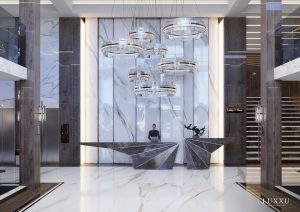
Hospitality Design – The Lobby Of Dreams By Luxxu – Luxxu is all about bringing excellence and opulence to every type of interior. The brand’s residential projects have surely been a delight to contemplate, but of course, for Luxxu that’s not enough and the residential setting is not a boundary that restrains the brand’s ability to provide the utmost luxury.
This hospitality project in Sydney has been one of the most recent and innovative creations by the brand and in today’s article, Luxxu Blog will give you a tour of the first venue you encounter as you enter this hotel, the grandeur lobby holds many wonders that we can’t wait to show you.
Continue reading Hospitality Design – The Lobby Of Dreams By Luxxu at Luxxu Blog.
Pendant Lighting – The Luxxu Standard In Smaller Dimensions
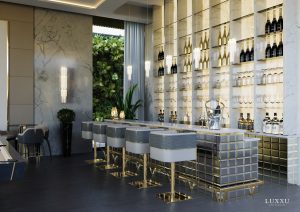
Pendant Lighting – The Luxxu Standard In Smaller Dimensions – Pendant lighting is one of those types of illumination where you can afford to be bolder and try different design styles and arrangements.
Luxxu offers you many stunning collections within this category, and among these lines, you can find members of design families that have been elegantly resized into a smaller but also more charming aesthetic.
Continue reading Pendant Lighting – The Luxxu Standard In Smaller Dimensions at Luxxu Blog.
House Tour: A Good Class Bungalow that’s built around mature trees on its land
Built on a steep, odd-shaped hill, the 10,980 sq ft house has five floors with a meandering facade designed to divert around the mature trees on the site.
The post House Tour: A Good Class Bungalow that’s built around mature trees on its land appeared first on The Peak Magazine.
What makes a luxury resort unique is the story behind its conception
Hospitality management and design firm, KulorGroup, turn idyllic holiday destinations into luxurious getaways.
The post What makes a luxury resort unique is the story behind its conception appeared first on The Peak Magazine.
Astonishing Modular Furniture Pieces for your NYC Penthouse
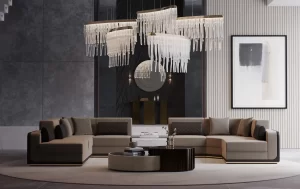
Astonishing Modular Furniture Pieces for your NYC Penthouse⇒ New York City, one interior design trend of 2022 is Modular Furniture Pieces, and we have the perfect ones for you. Elevate your Penthouse Interior Design with LUXXU!
See Also: Be Acquainted With This Thrilling New York City Loft By Luxxu
Thomson Sofa
Begin your living room décor with high-quality upholstery.
Continue reading Astonishing Modular Furniture Pieces for your NYC Penthouse at Luxxu Blog.
Studia 54 – A Glimpse Of Dining Luxury With This Great Design Team
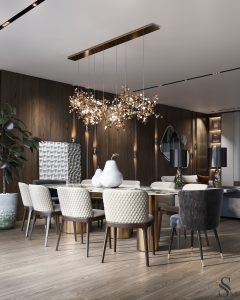
Studia 54 – A Glimpse Of Dining Luxury With This Great Design Team – The Studia 54 company group is made up of three unique brands whose operations cover the whole range of interior design and architecture.
They want to be the best global interior design and architectural design studio by creating projects in their distinct style. They make dreams of rich and comfortable living a reality by bringing together specialists from various industries.
Continue reading Studia 54 – A Glimpse Of Dining Luxury With This Great Design Team at Luxxu Blog.
Urban Oases: Design Trust’s Cofounder Marisa Yiu on Transforming Local Neighbourhoods

Marisa Yiu, cofounder and executive director of Design Trust Futures Studio, tells us how clever collaborative design with public participation is transforming local neighbourhoods.
Marisa Yiu of Design Trust on Transforming Local Neighbourhoods

Nestled between sub-divided residential Tsuen Wan high rises, the transformation of Yi Pei Square Playground from downtrodden to the now-colourful strip of land filled with graphic shapes and play areas for all has been breathtaking to see. Then there’s the bright pink, ultra-modern Portland Street Rest Garden, emboldened with hexagonal tables and seating, becoming a “Hong Kong destination” and an unlikely Instagram sensation.
Both are among four sites selected for radical redesign and regeneration under the Design Trust Futures Studio’s microparks initiative, which is aimed at transforming formerly dilapidated public areas with high foot traffic and urban density into fresh, positive spaces for an interactive local community.
“We’re building these microparks collaboratively, and it’s just accelerated positively for the community at large. It’s a really layered and multi-disciplinary programme,” says architect, Design Trust co-founder and executive director Marisa Yiu.
“You have different skillsets and designers getting involved and, now it’s open for the public to enjoy, you have the elderly sitting there, you have children playing, fashionistas coming to support us and government officials knocking at our door asking how they can further support us.”

The project, curated by Yiu, debuted in the spring with Yi Pei Square Playground, following the concept of The Communal Living Room, in which a team of young designers collaborated and were mentored by architect Mimi Hoang.
“This was the outcome of site research and analysis, various public-engagement sessions and collective efforts from public and private agencies, aiming at introducing this unique ‘communal living room’ in Yi Pei Square for local residents and encouraging the concepts of inclusive and intergenerational play,” explains Yiu.
During the pandemic and with limited travel in Hong Kong, there’s been a renewed focus on how local spaces serve the people who live nearby – especially potent in our dense, skyscraper-filled city filled with cramped apartments. The appearance of these playful, vibrant microparks in populated areas of Hong Kong are little, bright beacons of positivity in uncertain times.
The dilapidated Portland Street Rest Garden in Yau Tsim Mong got a similar treatment with a half park design, inspired by the ethos of the New York Highline. The result: a bright pink space with terrazzo features and moveable modular fuchsia-hued furniture, so people tailor the space to their own needs, while lush plants, many of them seasonal pink, spark joy and positivity.
Uplifting colours, shapes and a healthy dose of playfulness was a result of local designers challenging each other, with several involved in each design.


With eyes on Hong Kong and China’s Greater Bay Area, Yiu is instrumental in steering the Design Trust NGO, which she co-founded in 2014, a few years after joining the Ambassadors of Design board in 2008. Aside from her NGO work, the Columbia and Princeton graduate is also a founding partner of ESKYIU, the award-winning multi-disciplinary architecture and research design studio based in Hong Kong, which has taken on high-profile clients such as K11. However, it was her work as chief curator of the 2009 Hong Kong and Shenzhen Bi-City Biennale of Urbanism/Architecture on the West Kowloon waterfront that first put her name on the Hong Kong design map.
“I co-founded Design Trust with a collective vision from a lot of leaders and friends. Grant-giving wasn’t enough – we wanted to get the international community involved,” says Yiu. “I’ve always been involved with schools and non-profit organisations, so wanted to bring that energy into Hong Kong.”
Her biggest push was establishing the flagship Design Trust Futures Studio programme in 2017, based on mentor-mentee workshop relationships, looking at various urban developments and thinking about values in society, while empowering the positive value of the design of heritage and public spaces in the region.
“It’s multidimensional, like going back to school for everyone, not just young designers, but also working alongside various stakeholders – from the grassroots and government officials to policymakers and superstar mentors – with very specific goals in mind,” Yiu explains.
“I always believe that Hong Kong is a model city, just because of the bifurcation of nature and the city with pockets of extraordinary culture, but the government obviously needs to do better at creating friendlier, inspirational, practical and comfortable playgrounds and parks – it’s about human dignity.”


It seems the microparks spirit has caught on though, with the government announcing around 170 public spaces to be regenerated in coming years, though the Design Trust won’t be involved in most of them. Those in the city can look out for how the two remaining pilot spots – Hamilton Street Rest Garden and the Sitting-Out area under Hill Street Flyover – will evolve.
Yiu’s ambition at the organisation is to go beyond just seeding grants and research fellowships for young designers – she aims to place Hong Kong at the heart of the global design dialogue while engaging the public. Fostering a sense of wellbeing on home turf isn’t just about belonging but often how much say we get to influence its evolution.
“I’ve had this passion about how to involve the community beyond different disciplines,” she says. “The concept is to bring people together, to have an active voice and participate and transform our city.” The journey has been a rewarding one but also “quite a challenge”, Yiu admits.
As a young architect, she spent significant time working in New York with inspirational mentors and starting her own practice with her husband. They then moved to London, where they taught at the Architectural Association, before eventually landing back in her hometown. Yiu’s attitude of wanting to work towards a 360 multidimensional approach was no doubt influenced by early mentors such as Elizabeth Diller, who was one of the lead architects on the New York Highline project, the famous regeneration of an old New York elevated railway into a long greenway public park.
“That was a case study of preserving this incredible infrastructure of New York,” she adds. “Each city has its own differences and challenges, but there’s also a lot of shared experience to impart.”
Yiu has taught at the University of Hong Kong Department of Architecture and the Chinese University of Hong Kong’s School of Architecture, and that engagement with education, experimental architecture and a history of how the culture of the city is a type of fabrication, all inspired the approach she’s advocating at the Design Trust.
It’s exactly what the city needs – and especially now. These vibrant little urban oases offer much hope, both real and symbolic, their whimsical character proving powerful anecdotes in a city living under pandemic restrictions.
“As a non-profit organisation, we like to experiment and pilot,” says Yiu, “Future wise, we’ll hopefully be developing a more expansive programme, but we still need to have a sense of precision … It’s great to have this momentum of generosity and collaboration.”
The post Urban Oases: Design Trust’s Cofounder Marisa Yiu on Transforming Local Neighbourhoods appeared first on Prestige Online - Hong Kong.
-
Previous
- Page 1 of 85
- Next
